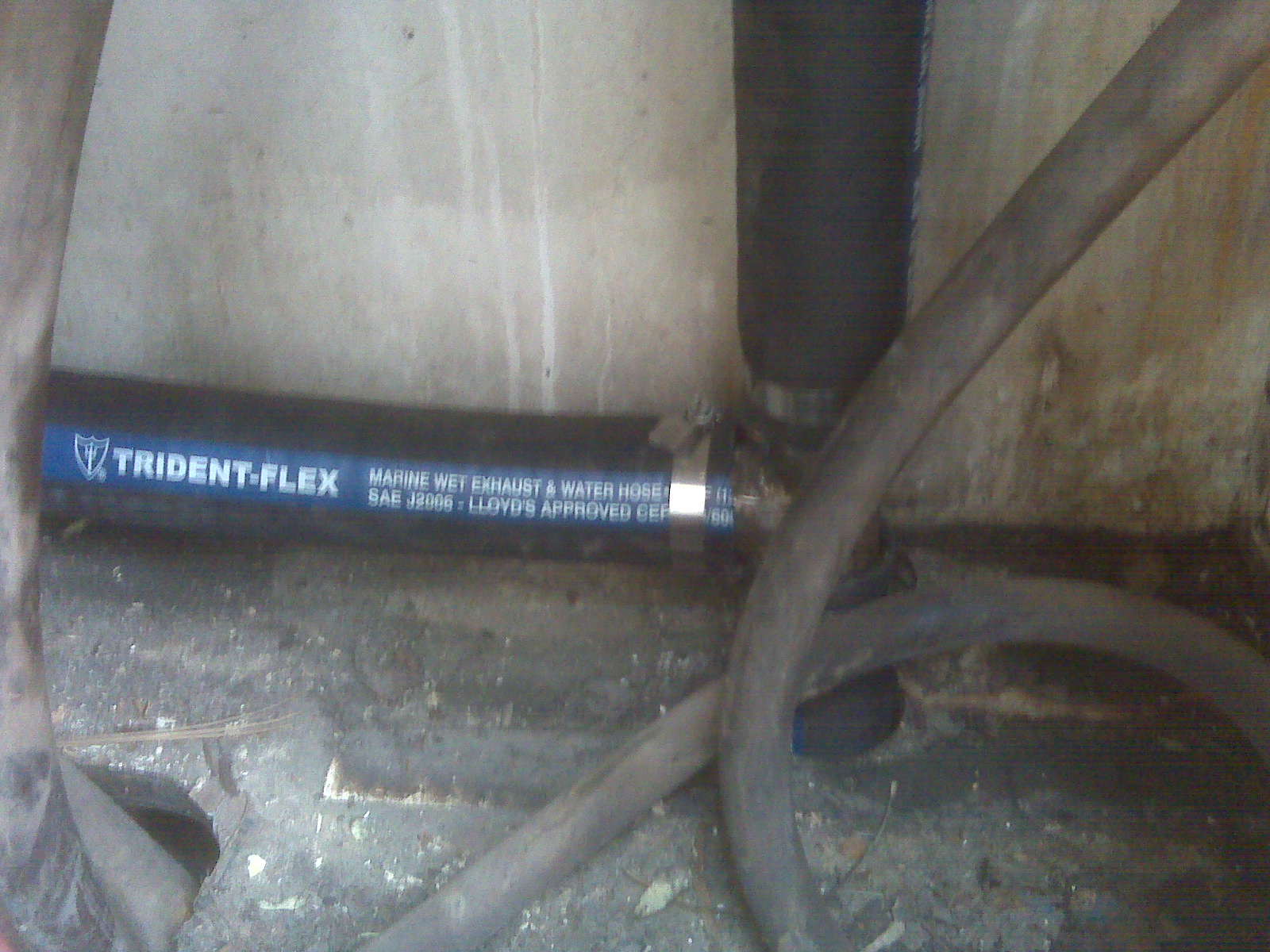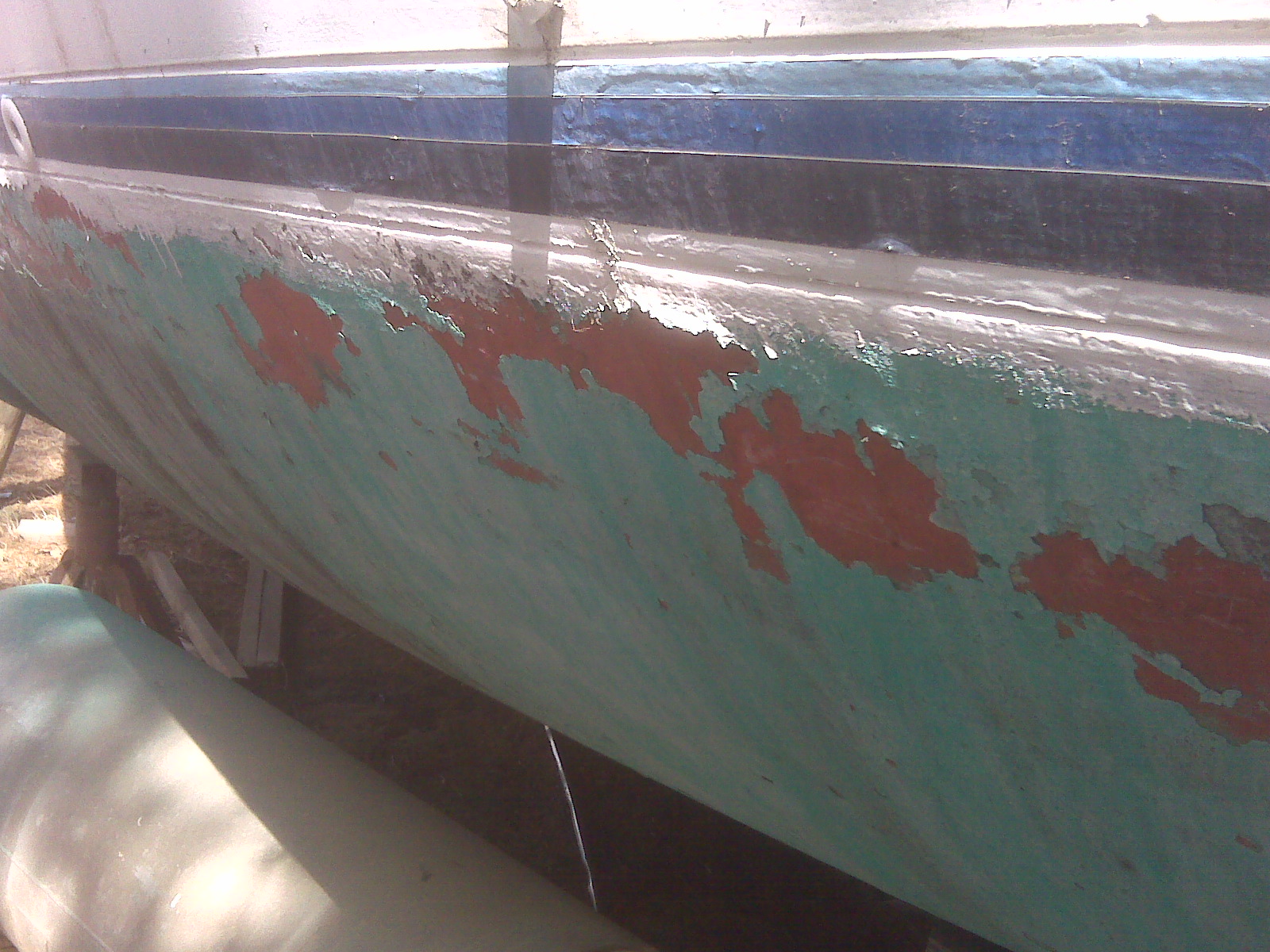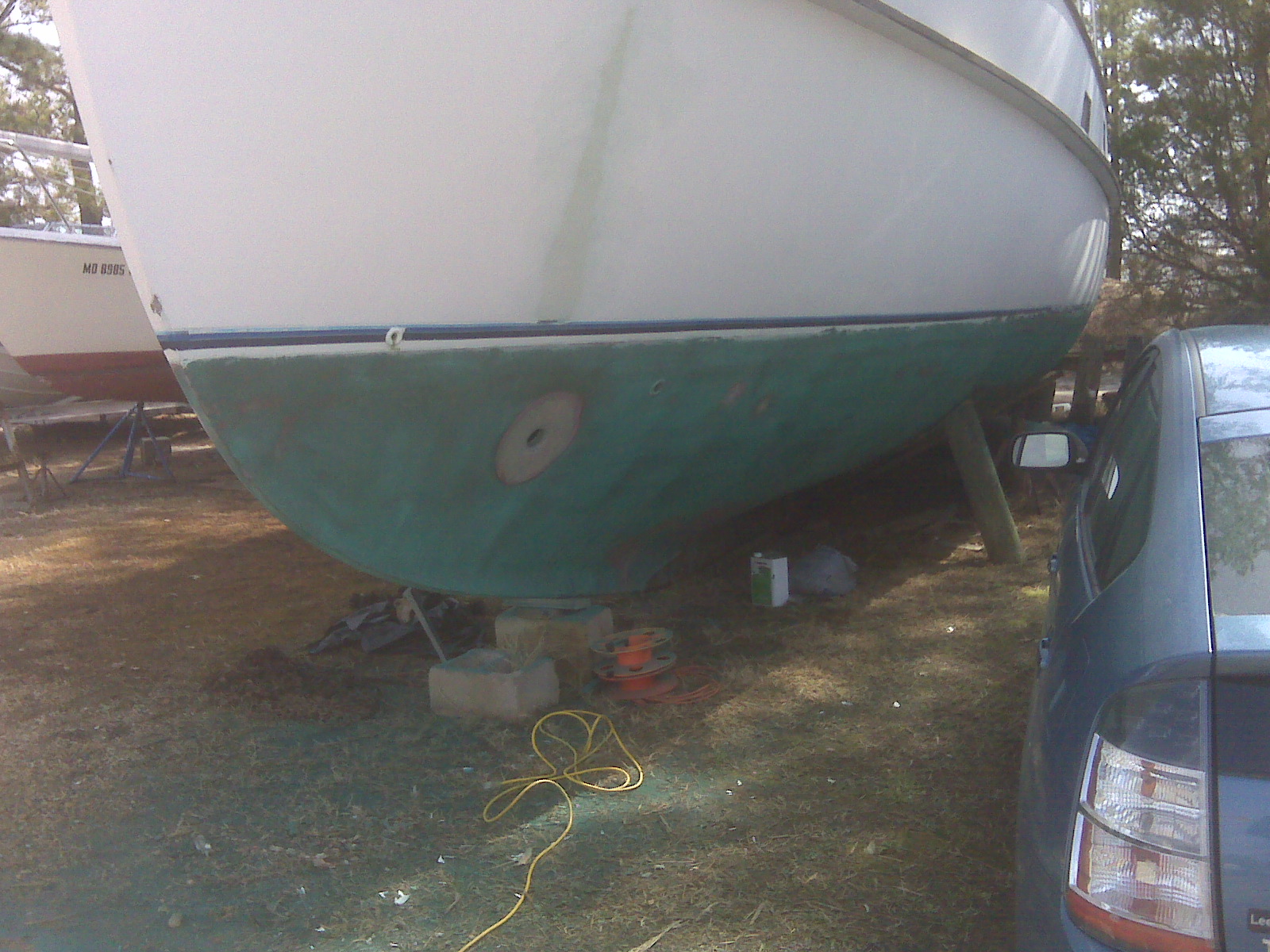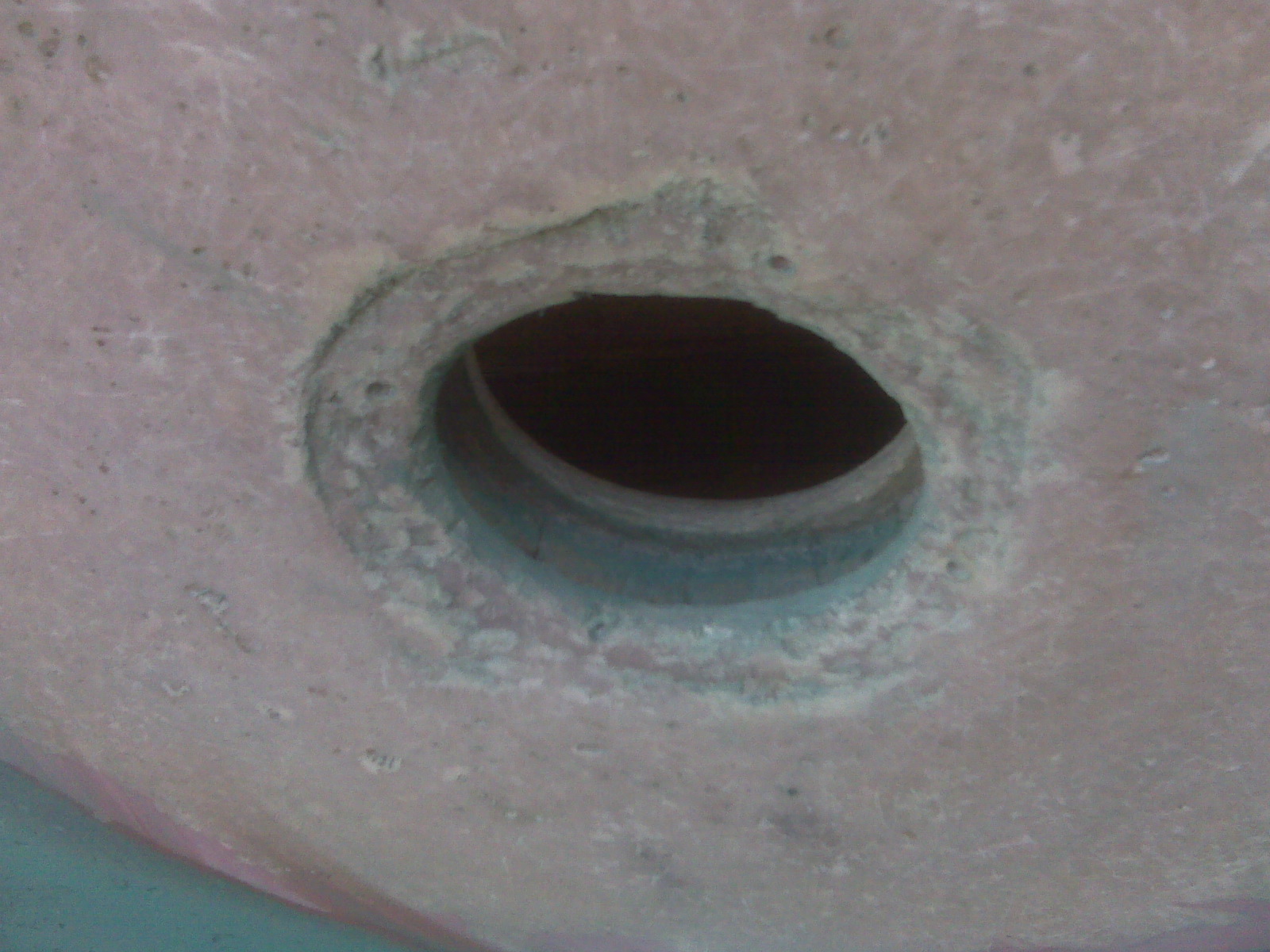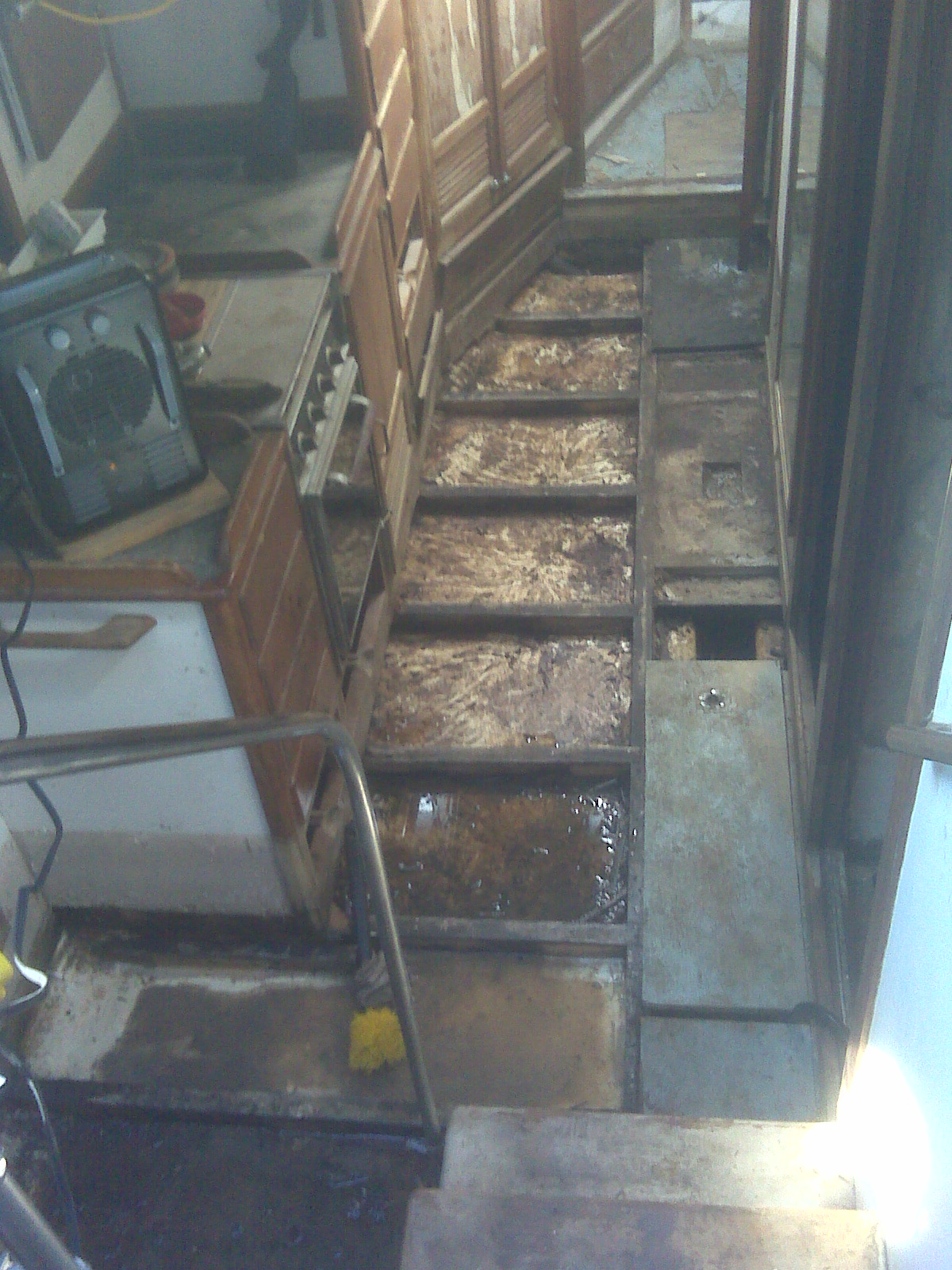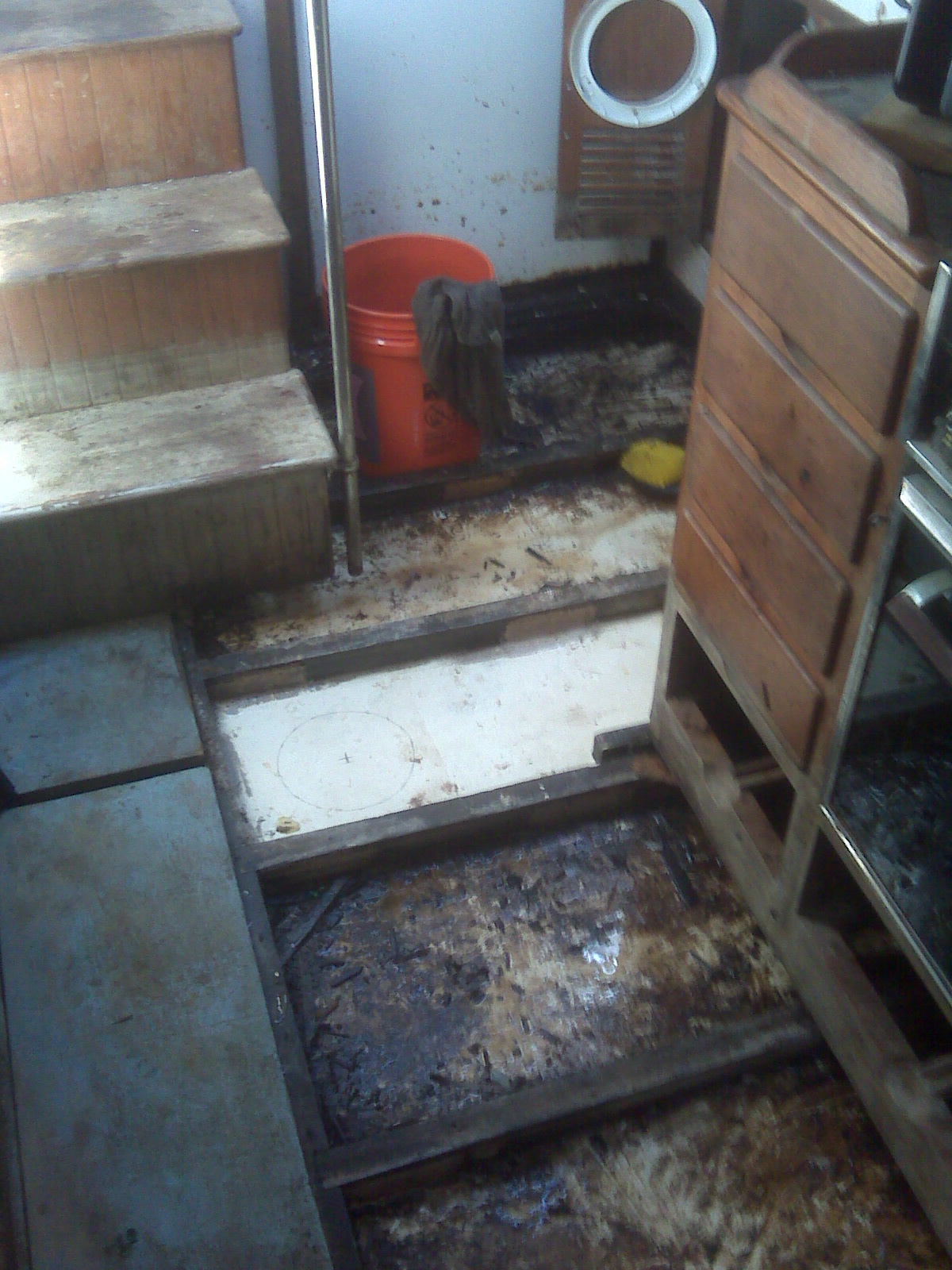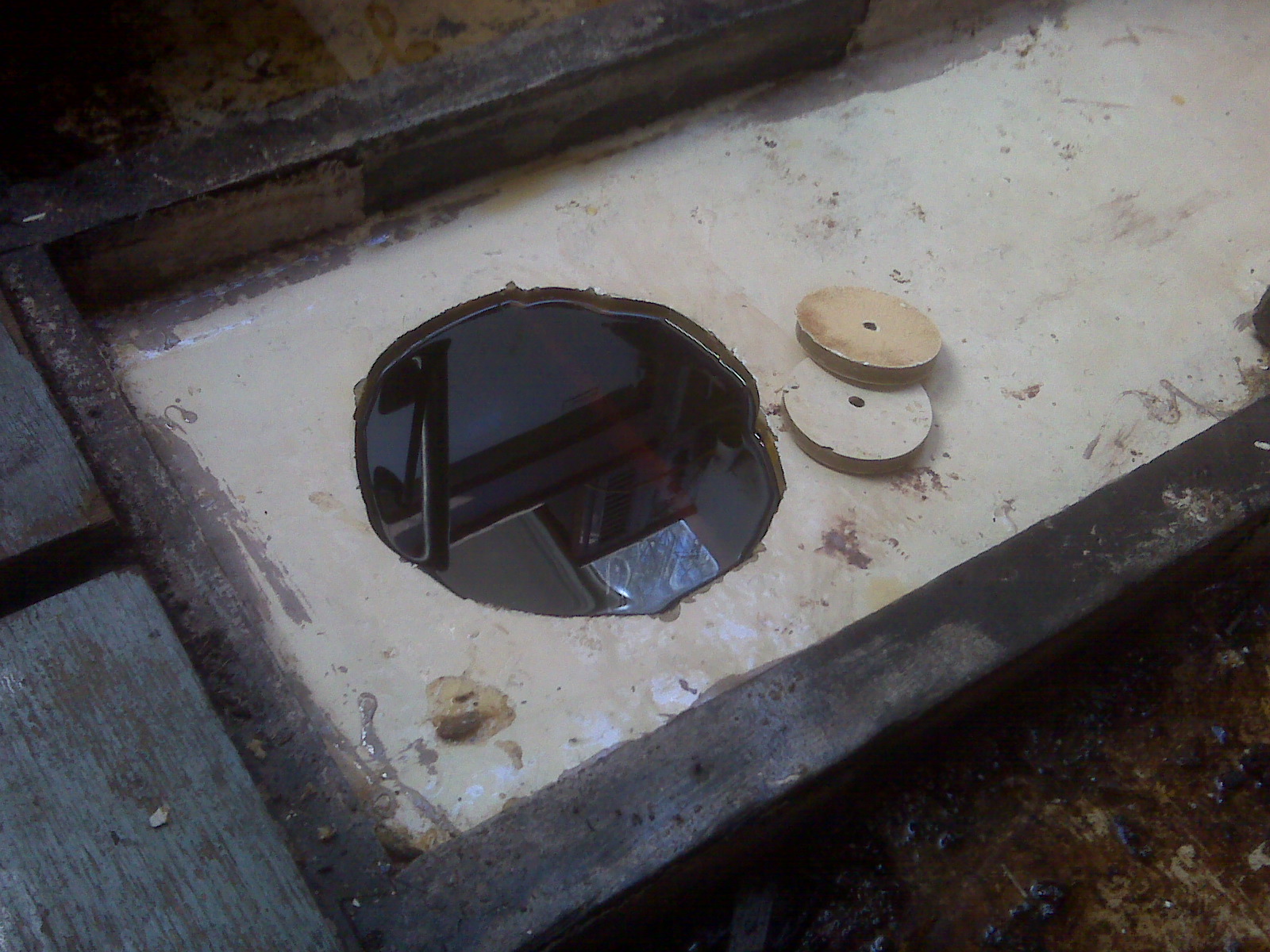We have the title to the boat! So Gypsy is officially no longer abandoned. We’ve decided to rename her, against many complaints from the “locals”, who see this boat as a fixture of the marina– as Dave likes to say, he’s been here so long, he’s no longer a “regular,” he’s furniture– and the boat’s been here far longer. She’ll soon be in the water, which will change the whole look of the boat-yard.
So what shall we name her? In homage to her color, her various nick-names (“the Bow of Gibraltar” being my favorite), one of Dave’s favorite shouted quotes from Moby Dick, and Isabel’s Spanish heritage, the new name will be– “Ballena Blanca”. (“White Whale” in Spanish.)
Of course, we’ll follow the traditional denaming and christening ceremonies– here’s the one I plan to use. First, every vestige of the old name must be removed from the boat. I’ve sanded the name off the transom, and donated the circa 1990, framed radio license to the marina “museum.” I can’t find any other trace of her name, but I’ll keep looking to be sure. Once that’s done, we’ll throw a party, and hold this ceremony (with thanks to the author, John Vigor):
“In the name of all who have sailed aboard this ship in the past, and in the name of all who may sail aboard her in the future, we invoke the ancient gods of the wind and the sea to favor us with their blessing today.
“Mighty Neptune, king of all that moves in or on the waves; and mighty Aeolus, guardian of the winds and all that blows before them:
“We offer you our thanks for the protection you have afforded this vessel in the past. We voice our gratitude that she has always found shelter from tempest and storm and enjoyed safe passage to port.
“Now, wherefore, we submit this supplication, that the name whereby this vessel has hitherto been known, Gypsy, be struck and removed from your records.
“Further, we ask that when she is again presented for blessing with another name, she shall be recognized and shall be accorded once again the selfsame privileges she previously enjoyed.
“In return for which, we rededicate this vessel to your domain in full knowledge that she shall be subject as always to the immutable laws of the gods of the wind and the sea.
“In consequence whereof, and in good faith, we seal this pact with a libation offered according to the hallowed ritual of the sea.”
Then we’ll pour or spray a bottle of good champagne over her bow, consigning her old name to history.
Later, when she’s ready for the water with fresh paint and new livery, we’ll perform the christening ceremony:
“I name this ship Ballena Blanca. May she bring fair winds and good fortune to all who sail on her.”
And according to custom, break a bottle of bubbly on her bow. I imagine I’ll intone the first ceremony, and Isabel will stand in for Queen Elizabeth for the second.
It’ll be quite a party!

